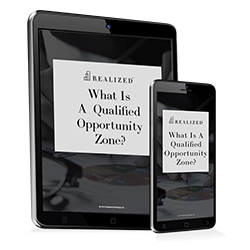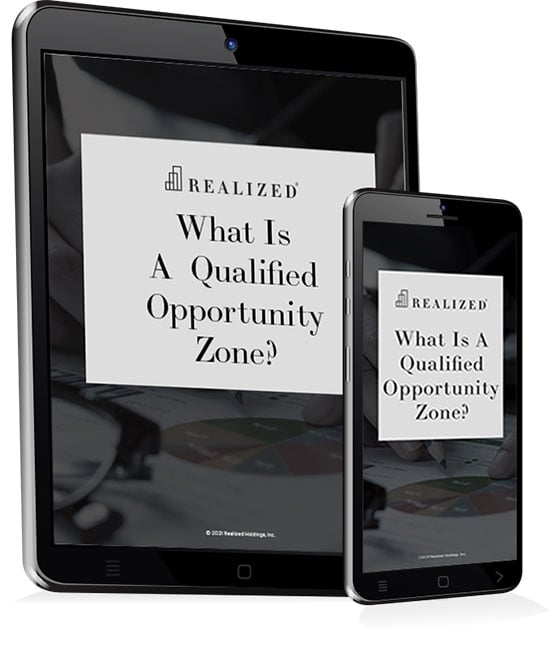
In October 2021, private equity firm and family office Belpointe Capital launched the first (and to date, only) publicly traded Qualified Opportunity Fund (QOF). Operating under the NYSE stock name of OZ, Belpointe OZ, to date, has raised more than $345 million of equity capital and has more than 2,500 units in its development pipeline.
With Belpointe’s first publicly traded QOF, is it possible that others will follow? Can opportunity zones be publicly traded? They could be. But it’s highly difficult for this to happen for the following reasons.
QOZs Aren’t “Traded”
First, investors don’t put their capital gains from the sale of assets directly into Qualified Opportunity Zones (QOZs) and Qualified Opportunity Zone Properties (QOZPs). Rather, investors direct their capital gains into Qualified Opportunity Funds. These QOFs, in turn, invest in QOZPs located in federally-designated QOZs. The individuals, corporations, and partnerships receive tax-deferred benefits for their investments. These aren’t “traded” as much as they represent funding vehicles for QOZP investments.
Narrow “Investor” Definition
The Opportunity Zone program isn’t open to all investors. Rather, the purpose of the program is to encourage investors with recognized capital gains to put those profits into QOFs. Even investors involved with a publicly traded QOF like Belpointe must use only capital gains for investments.
When investing in any QOF, no matter the structure, investors must direct their capital gains into the vehicle within 180 days of the gains’ recognition. In the case of Belpointe OZ, it’s incumbent on the investor to ensure that happens.
Costs and Limitations
Brandon Lacoff, CEO and chief investment officer at Belpointe OZ, acknowledged that going public with QOFs can be very difficult and costly. In an interview with OpportunityDb’s Jimmy Atkinson, Lacoff indicated that “timing cost and many other factors . . . prohibit most investors or most sponsors to have a publicly-traded structure.” He also pointed out that publicly-traded structures should be larger, while the distribution of funds can also be problematic.
While it’s possible to invest in Opportunity Zone REITs, most of these are private funds, rather than publicly traded vehicles. A REIT can invest in a QOF (as can corporations and individuals). But QO F can’t invest in a REIT because of the many restrictions set out for the typical opportunity zone fund and its investors.
Long-Term Hold Requirements
Unlike many publicly traded companies or REITs, investors must be prepared to keep their investments in a QOF for longer periods of time to realize any tax benefits. They’re required to pay the deferred taxes in 2027 (for the year ending Dec. 31, 2026). In addition, if the investor holds the investment for 10 years or longer, they’re not required to pay federal taxes on capital gains realized from the QOF investments.
This can run counter to the purpose of publicly traded stocks or funds, which rely on market movements and demand, as opposed to long-term investments.
The Likelihood of Public QOFs
Belpointe OZ proved that it is possible to create and run a publicly traded QOF. But Belpointe OZ is the only one of its kind, to date. To ensure tax-deferred benefits for investors, Qualified Opportunity Funds must adhere to regulations set forth by the IRS and U.S. Treasury Department. This, and other factors, can make it difficult for QOFs to successfully navigate the steps necessary for publicly traded status.
This material is for general information and educational purposes only. Information is based on data gathered from what we believe are reliable sources. It is not guaranteed as to accuracy, does not purport to be complete and is not intended to be used as a primary basis for investment decisions. It should also not be construed as advice meeting the particular investment needs of any investor.
Investors in QOFs will need to hold their investments for certain time periods to receive the full QOZ Program tax benefits. A failure to do so may result in the potential tax benefits to the investor being reduced or eliminated.
If a fund fails to meet any of the qualification requirements to be considered a QOF, the anticipated QOZ Program tax benefits may be reduced or eliminated. Furthermore, a fund may fail to qualify as a QOF for non-tax reasons beyond its control, such as financing issues, zoning issues, disputes with co-investors, etc.
Distributions to investors in a QOF may result in a taxable gain to such investors.
The tax treatment of distributions to holders of interests in a QOF are uncertain, including whether distributions impact the aforementioned QOZ Program tax benefits.
A QOF must make investments in Qualified Opportunity Zones, which carries the inherent risk associated with investing in economically depressed areas.
This is neither an offer to sell nor a solicitation or an offer to buy the securities described herein. The offering is made only by the Prospectus or Private Placement Memorandum.
Realized does not provide tax or legal advice. This material is not a substitute for seeking the advice of a qualified professional for your individual situation.



